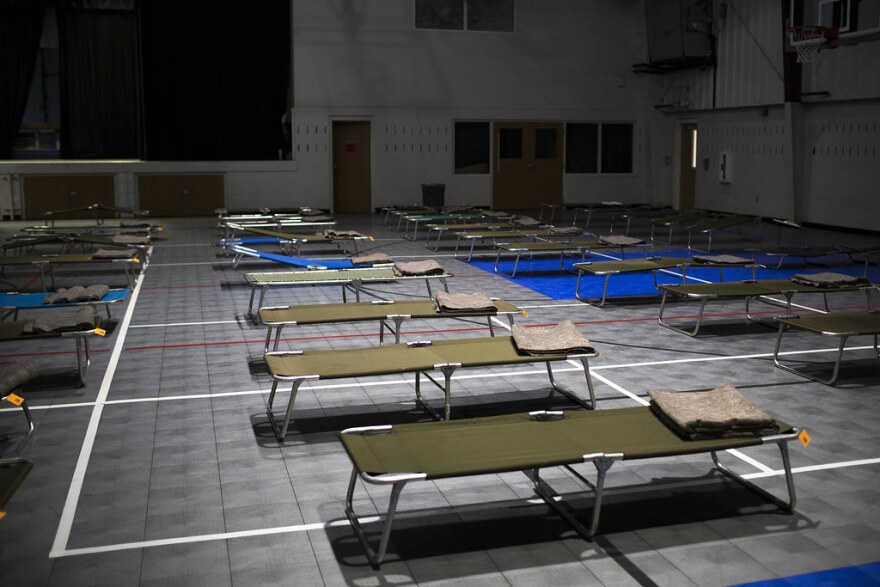The coronavirus arrived in Central Texas with the spring. That meant no South by Southwest and an early end to the school year. It also meant people stuck at home, at least, enjoyed some pretty good weather.
That’s likely about to change.
Austin’s seasons of extremes are here. May and June are the area’s rainiest months, and those rains often bring floods. (That's why when you talk about the “Memorial Day Flood” in Austin, you need to specify which year.) Looking further ahead, the area can expect another blazingly hot summer, interrupted, perhaps by an active hurricane season.
Now, Austin emergency management workers are trying to figure out how to best prepare for the prospect of a weather disaster running up against a global pandemic.
Bryce Bencivengo with Austin's Office of Homeland Security and Emergency Management says the city is taking inventory of potential emergency shelters in the event of storms or extreme heat. But the types of shelters the city uses may be different this year.
Bencivengo says the city is considering using hotels as emergency shelters to limit evacuees’ exposure to each other. Austin has already contracted to use three hotels for emergency housing and quarantine for homeless Austinites during the pandemic.
Bencivengo says one challenge is figuring out how long empty hotels may be available.
“Will travel pick up?" he said. “Will that change our ability to provide hotel rooms?”
The amount of people allowed to congregate in more standard shelters like school gymnasiums and convention centers may also change.
“We may need to look at a much larger space to accommodate the same amount of people that we have in the past” to allow for social distancing, he said. “Some of the traditional places that we've used in the past to house thousands may now be the places where we house hundreds instead.”
Emergency planners across the country are grappling with similar challenges. Oklahoma University has limited access to tornado shelters for students living off campus and nonstudents.
In Florida, emergency managers are redeveloping evacuation and shelter plans to account for the threat of COVID-19.
FEMA and the American Red Cross are also advising new planning strategies.
Bencivengo says providing personal protective equipment to people escaping extreme weather will also become part of any disaster strategy. He advises people to include face masks, hand sanitizer and gloves as part of their emergency supply kits.
But maybe the most important thing people can do to ensure Austin is ready to tackle the next natural disaster is to slow the spread of the diseases now.
“The good hygiene, the staying home when sick, physical distancing, face coverings are so critical to ensuring that we don't overwhelm our health care system in the face of another emergency,” Bencivengo said.
Got a tip? Email Mose Buchele at mbuchele@kut.org. Follow him on Twitter @mosebuchele.
If you found the reporting above valuable, please consider making a donation to support it. Your gift pays for everything you find on KUT.org. Thanks for donating today.




